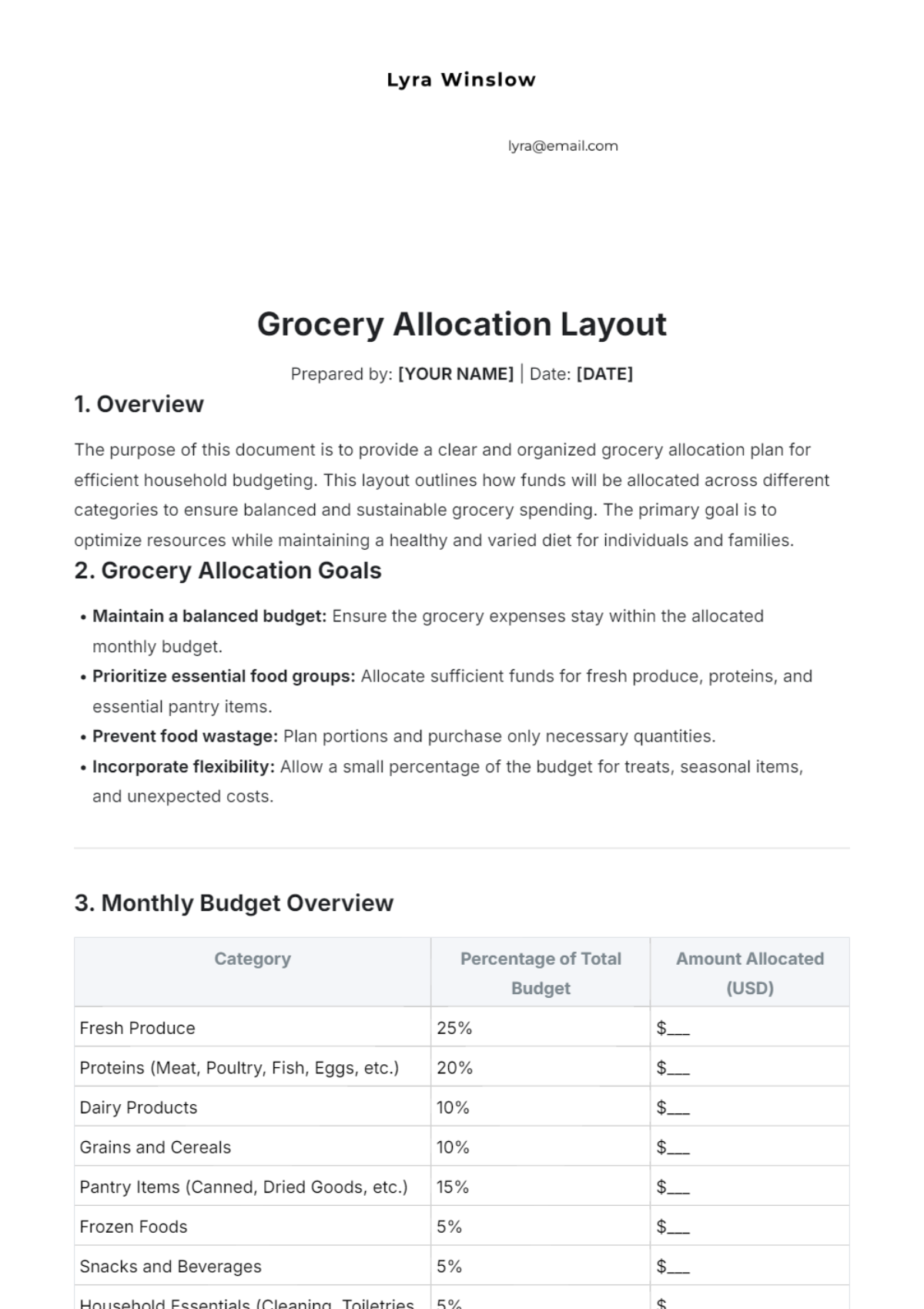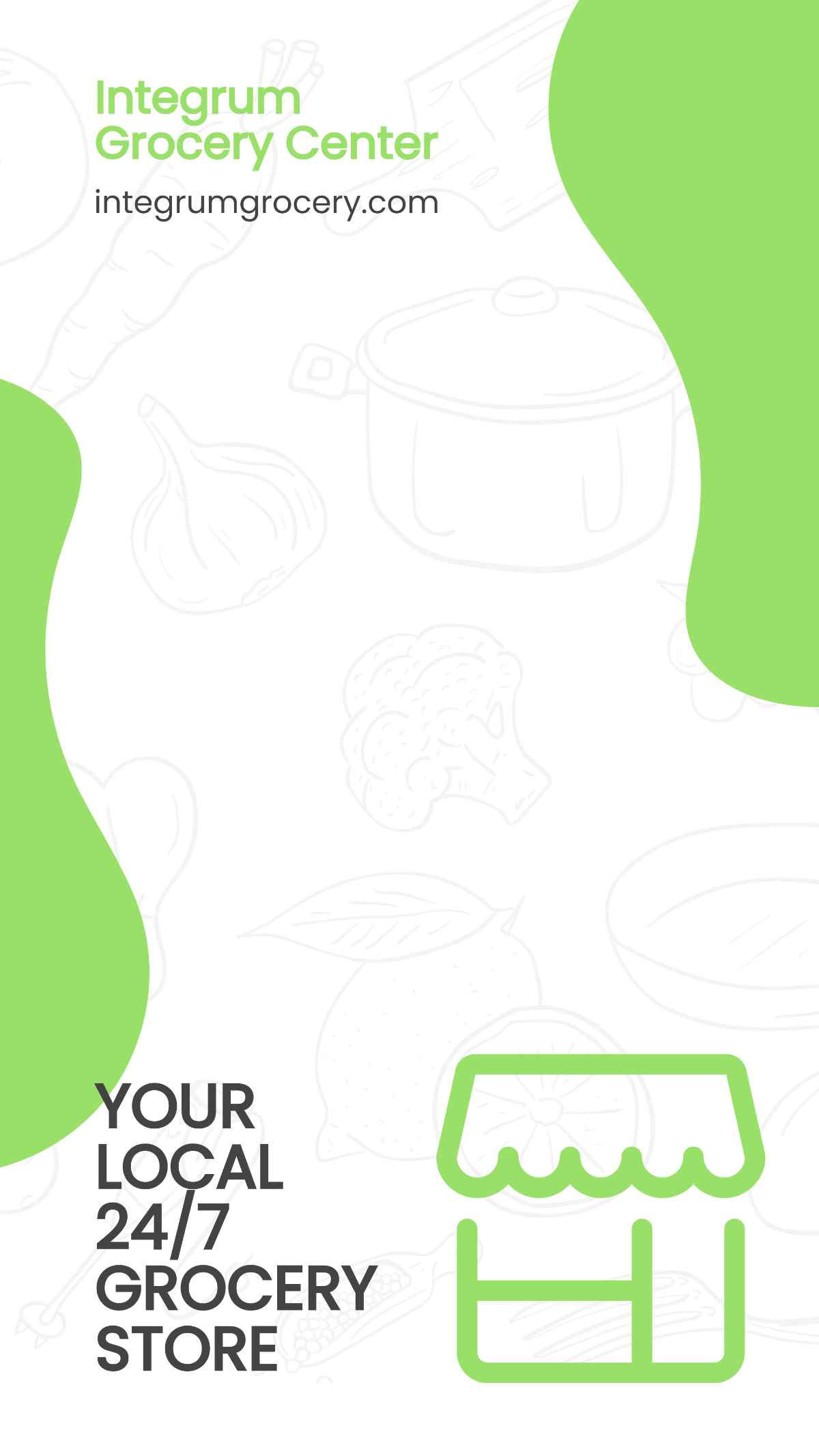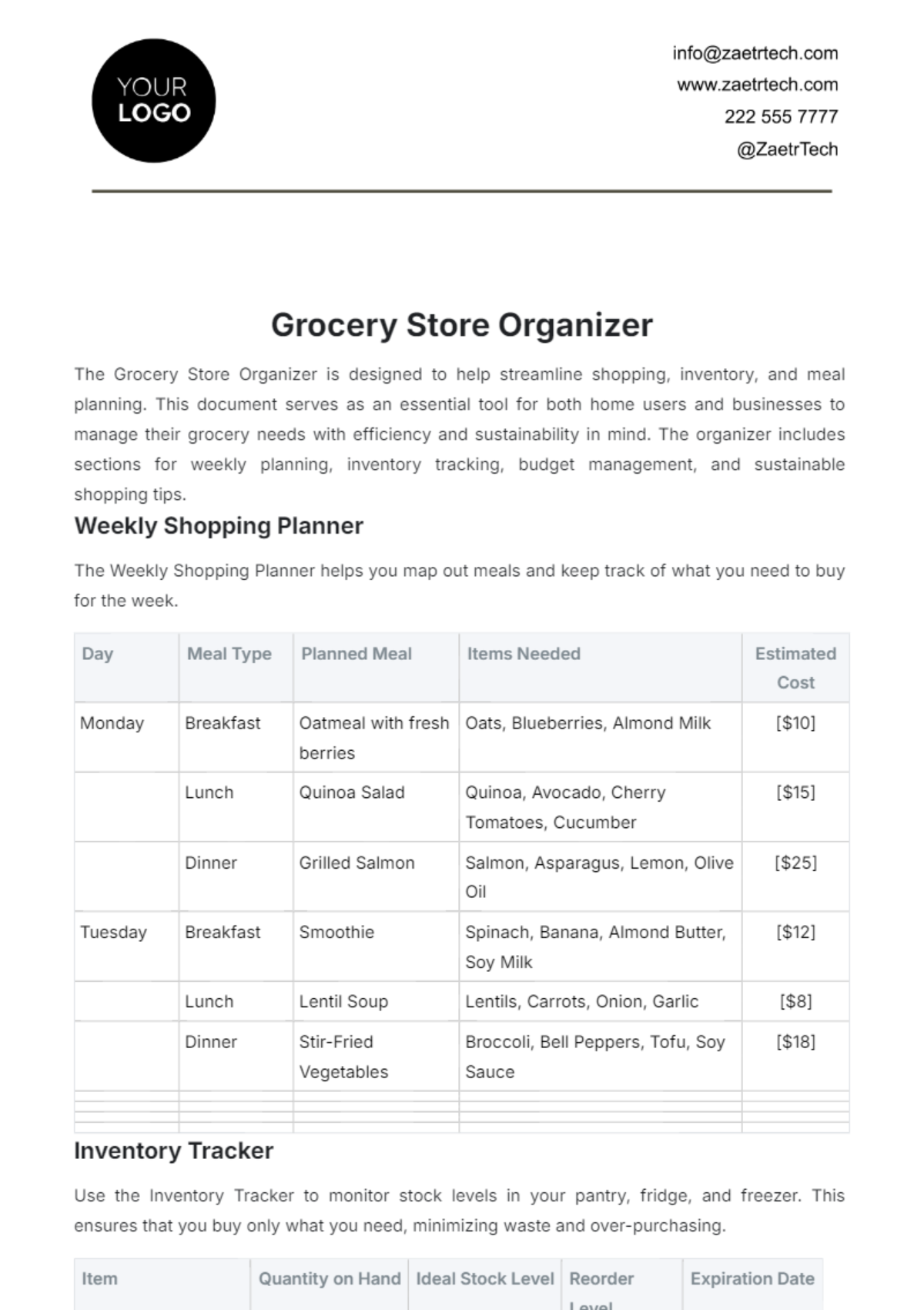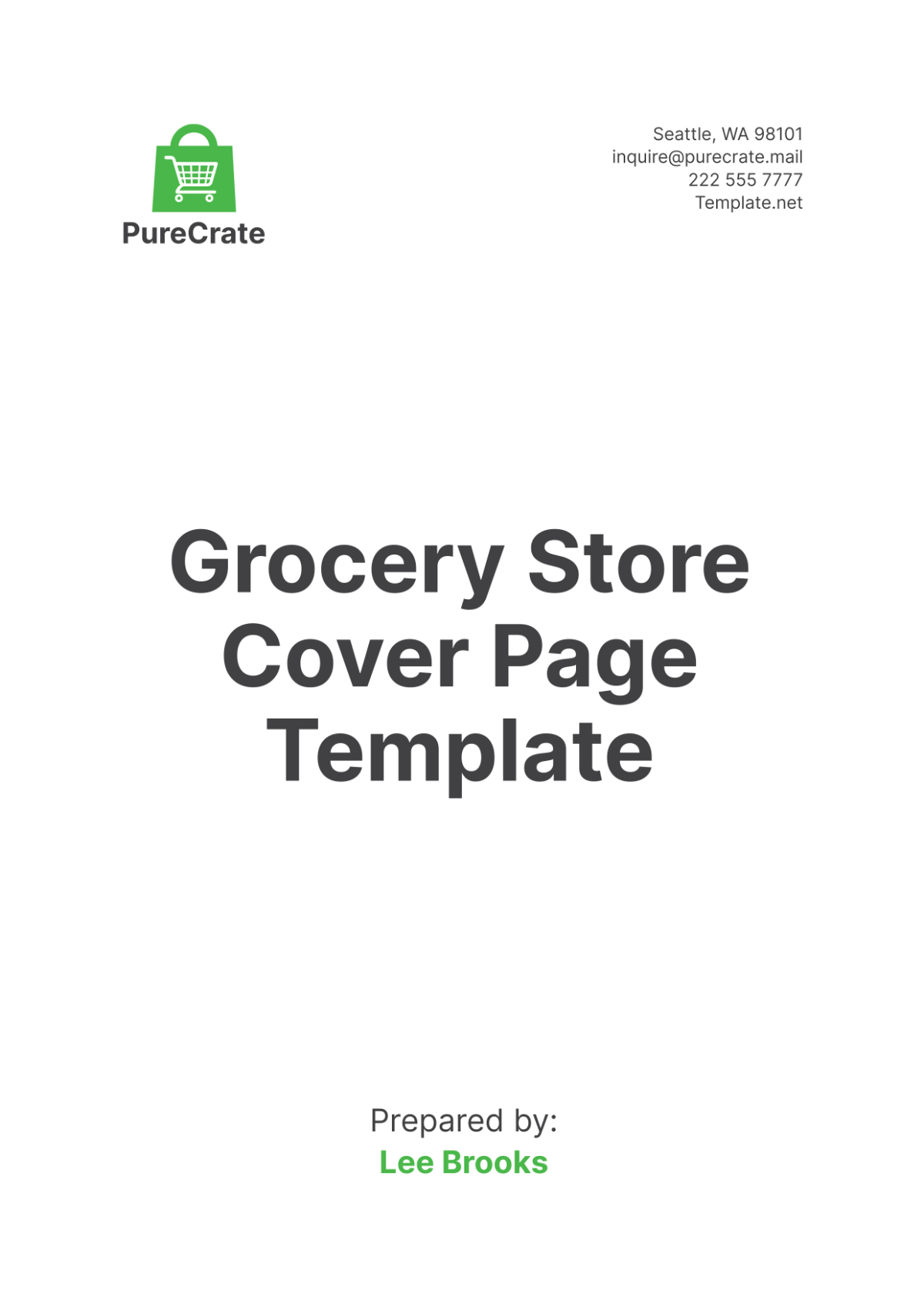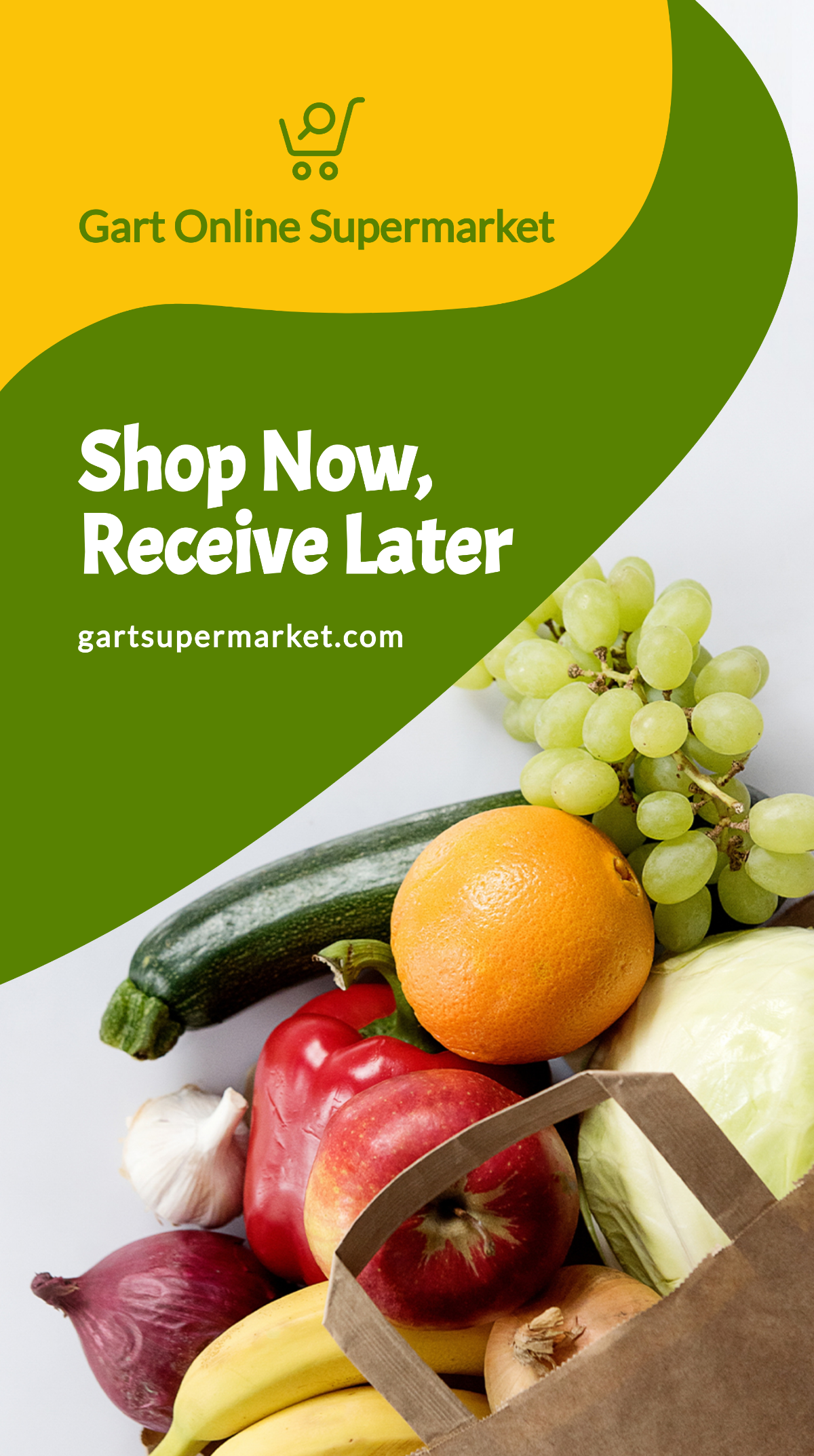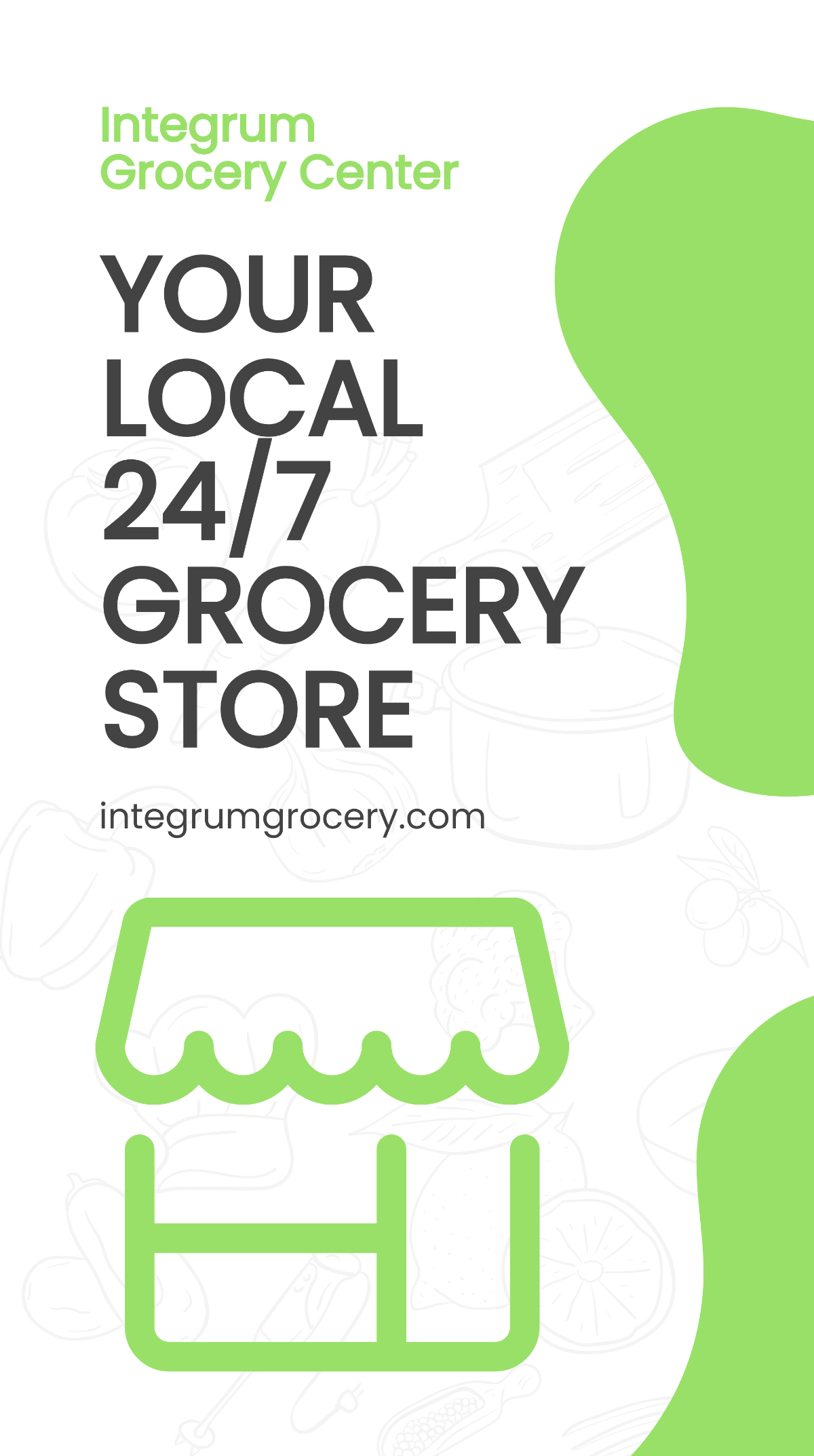Grocery Store Guideline
I. Introduction
Welcome to the [Your Company Name] Grocery Store Guideline. Our mission is to provide a seamless shopping experience while ensuring the highest standards of safety, quality, and customer service. This guideline is designed to outline our operational procedures, regulatory compliance, and best practices for all employees, ensuring that our store remains a trusted and reliable place for all customers. At [Your Company Name], we are committed to creating a positive and efficient environment that meets both industry standards and legal requirements.
The following sections of this guideline cover various aspects of store operations, including employee responsibilities, safety protocols, inventory management, and customer service expectations. Adhering to these guidelines helps maintain consistency and quality across all aspects of our business. We encourage all team members to familiarize themselves with these procedures and to uphold the values and standards that define [Your Company Name]. Together, we strive to create an exceptional shopping experience that aligns with our commitment to excellence and integrity.
II. Preparing for Your Grocery Trip
Preparing effectively for your grocery trip can make a significant difference in your shopping experience. By taking a few preliminary steps, you can save time, reduce stress, and ensure you get the most value from your shopping efforts. Whether you're shopping for essentials or planning a week's worth of meals, a bit of preparation goes a long way.
A. Creating a Shopping List
A well-organized shopping list is your key to a smooth grocery shopping experience. By identifying necessary items, planning meals, and categorizing products, you can shop more efficiently and ensure you don't forget essential items. This approach helps you stay focused and makes your time in the store more productive.
Review your pantry and refrigerator to identify necessary items.
Note down staples and household essentials.
Plan meals in advance and list ingredients needed.
Categorize items by sections such as produce, dairy, meats, etc.
B. Budgeting
Effective budgeting is crucial for managing your grocery expenses. Setting a clear budget based on your needs and tracking your spending can help prevent overspending. Using tools like grocery shopping apps can also assist in maintaining control over your finances, making your shopping trips more economical and stress-free.
Set a realistic budget based on your household needs.
Track your spending and adjust future budgets accordingly.
Consider using a grocery shopping app to manage your budget.
C. Choosing the Right Time to Shop
Selecting the best times to shop can significantly enhance your grocery shopping experience. Early mornings or late evenings typically offer a quieter, more relaxed environment, while weekdays often see fewer crowds compared to weekends. Choosing these times can help you shop more comfortably and avoid long lines.
Opt for early mornings or late evenings when stores are less crowded.
Consider weekdays as weekends tend to be busier.
III. Inside the Grocery Store
The secret to a good shopping trip is knowing your way around the grocery store. Understanding the store layout, selecting quality products, and utilizing available discounts can help you shop more efficiently and make informed choices. This section provides essential tips for making your in-store experience smoother and more economical.
By following these guidelines, you can ensure that you find everything you need while maintaining quality and staying within budget. From navigating aisles and choosing the best produce to reading labels and utilizing discounts, these strategies will enhance your shopping experience and help you get the most out of your grocery trip.
A. Navigating Aisles
Navigating the aisles efficiently helps streamline your shopping trip and ensures you gather all necessary items. Begin with non-perishables and work your way to perishables to keep your groceries fresh. Familiarize yourself with the store layout and stick to your shopping list to minimize distractions and impulse purchases.
Start with non-perishable items and move towards perishables like produce and dairy.
Follow the layout of the store; most stores have similar layouts with produce and bakery sections at the entrance.
Stick to your list to avoid impulse buys.
B. Selecting Quality Produce
A balanced diet and delicious meals depend on choosing the greatest vegetables. Look for vibrant colors and firm textures in fruits and vegetables to ensure freshness and quality. Avoid items with bruises or off smells, and opt for seasonal produce for the best quality and price.
Look for vibrant colors and firm textures in fruits and vegetables.
Avoid produce with bruises, discolorations, or unpleasant smells.
Select seasonal produce for better quality and lower prices.
C. Reading Labels
Reading food labels helps you make healthier and more informed choices. Check ingredient lists for allergens and unwanted additives, and review nutritional information to manage your intake. Always verify expiration dates to ensure you purchase fresh, safe products for your household.
Check the ingredient list for any allergens or unwanted additives.
Look at the nutritional information to manage calorie intake and nutritional values.
Pay attention to expiration dates to ensure product freshness.
D. Using Coupons and Discounts
Maximize your savings by utilizing coupons and discounts. Gather coupons from various sources and participate in store loyalty programs for exclusive deals. Comparing prices and opting for generic brands can further reduce costs, making your grocery shopping more budget-friendly.
Collect coupons from newspapers, online sources, and store apps.
Join store loyalty programs for exclusive discounts and offers.
Compare prices and consider generic brands for cost savings.
IV. Checkout Process
Navigating the checkout process efficiently can significantly enhance your grocery shopping experience. Proper organization, choosing the right payment methods, and effective bagging techniques are essential for a smooth transition from shopping to leaving the store. Understanding these steps will help you save time and avoid potential issues at the checkout.
The following table provides clear guidelines for organizing items, selecting payment methods, and bagging groceries. By adhering to these practices, you can ensure a more efficient checkout process and maintain the quality of your purchases. Review these tips to make your grocery shopping experience as streamlined and hassle-free as possible.
Checkout Step | Guidelines |
|---|---|
Organizing Items at Checkout |
|
Payment Methods |
|
Bagging Groceries |
|
V. Post-Trip Considerations
After completing your grocery trip, it’s essential to address key post-trip tasks to ensure your groceries remain fresh and your shopping experience is continually improved. Proper storage, effective meal preparation, and reviewing your trip can significantly impact the quality of your food and your overall shopping efficiency. Taking these steps helps you maintain a well-organized kitchen and manage your grocery budget more effectively.
In this section, you’ll find practical advice on how to store your groceries correctly, prepare meals efficiently, and evaluate your shopping trip. These practices will help you extend the life of your groceries, streamline meal prep, and refine your future grocery trips for a more satisfying and cost-effective shopping experience.
A. Storing Groceries
Proper storage of groceries extends their shelf life and maintains food safety.
Refrigerate perishables immediately upon returning home.
Store dry goods in a cool, dry place away from direct sunlight.
Use airtight containers for opened packages to maintain freshness.
B. Meal Preparation
Efficient meal preparation using newly purchased groceries can improve your daily routine.
Pre-wash and prep produce for quick access during meal times.
Plan meals for the week and prepare ingredients in advance.
Store prepared meals in labeled containers for easy identification.
C. Reviewing Your Trip
Evaluating your grocery trip can help improve future shopping experiences.
Note down any items you missed or found unnecessary.
Assess your budget adherence and make adjustments as needed.
Consider feedback from household members for better planning next time.
VI. Conclusion
An effective grocery shopping experience hinges on preparation, organization, and post-trip evaluation. By following the guidelines outlined in this document, you can streamline your shopping process, from creating a detailed shopping list and budgeting to navigating the store and handling the checkout process. Each step is designed to enhance your efficiency, minimize stress, and maximize the value of your grocery trip.
Proper preparation, such as organizing your list and budgeting wisely, ensures you approach your shopping with a clear plan. Efficient in-store navigation and careful selection of products contribute to a smoother shopping experience, while thoughtful checkout practices can further enhance convenience and reduce hassle. Implementing these strategies helps you manage your time better and make informed purchasing decisions.
Post-trip considerations, including proper storage of groceries and meal preparation, are equally important for maintaining food quality and safety. By evaluating your shopping experience and making necessary adjustments, you can continuously improve your grocery shopping practices. At [Your Company Name], we are committed to helping you achieve a seamless and satisfactory grocery shopping experience. We hope these guidelines serve as a valuable resource for making each trip to the store more efficient and enjoyable.
